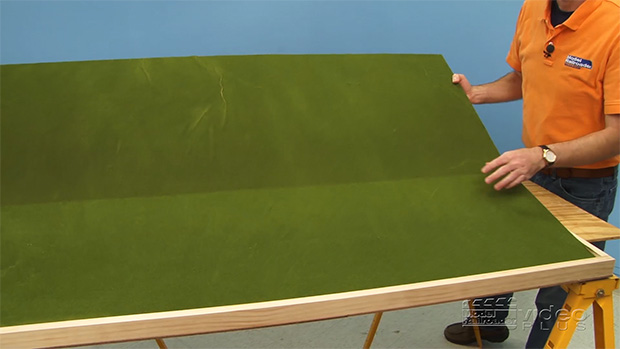
Having trouble viewing this video? Please visit our Video FAQ page After building a 40 x 60-inch lightweight base for our family-friendly layout, David demonstrates how to fill the interior of the frame with foam insulation board used to support the train set tracks and scenery. Would you like to learn more about how to […]
Read More…
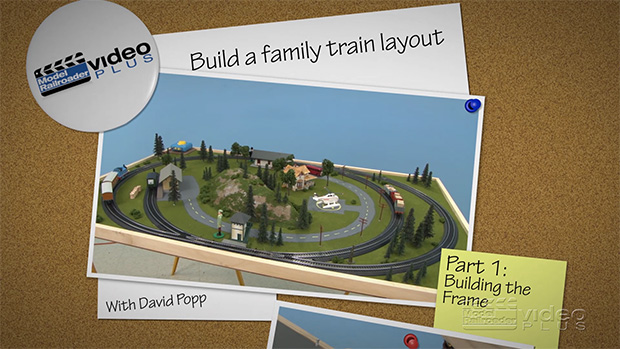
Having trouble viewing this video? Please visit our Video FAQ page Ready to build a model railroad the entire family can enjoy? Starting with a basic train set, David guides you through the materials, tools, and step-by-step instructions needed to build a simple 40 x 60 inch base for a lightweight and family-friendly layout. Would […]
Read More…
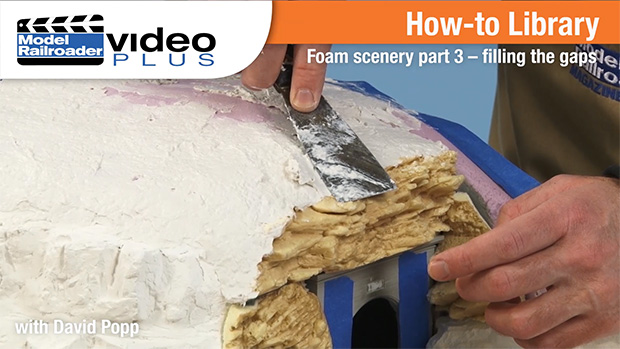
Having trouble viewing this video? Please visit our Video FAQ page Once your foam scenery is in place, you need to smooth out the bumps and fill in the gaps. David shows you how he did just that on our Thin Branch project railroad, including putting on the base coat of paint. […]
Read More…
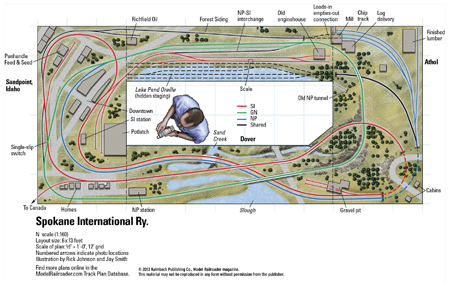
Name: Spokane International Ry. Layout designer: Mike Pagano Scale: N (1:160) Size: 6 x 13 feet Prototype: Spokane International Ry., Northern Pacific, and Great Northern Locale: Northern Idaho Era: 1954 to 1962 Style: Sectional island Mainline run: 78 feet Minimum radius: 12-1⁄2″ Minimum turnout: no. 4 Maximum grade: 3 percent (main), 4 percent (logging branch) […]
Read More…
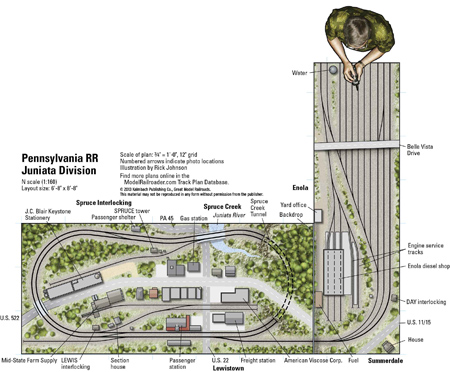
Name: Pennsylvania RR Juniata Division Layout designer: Dave Vollmer Scale: N (1:160) Size: 6′-8″ x 8′-8″ Prototype: Pennsylvania RR Middle Division Locale: central Pennsylvania Period: 1956 Style: island Mainline run: 15.4 feet Minimum radius: 13.5″ Minimum turnout: no. 5 Maximum grade: none Originally appeared in the Great Model Railroads 2014. Click on the link to […]
Read More…
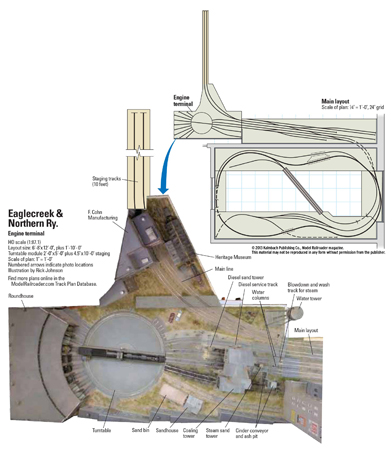
Name: Eaglecreek & Northern Ry. engine terminal module Layout designer: Flemming Ørneholm’s Size: 2 x 5 feet with 41⁄2″ x 10′-0″ staging track shelf Prototype: Union Pacific Locale: western United States Era: 1955 Style: module Minimum radius: 28″ Originally appeared in the October 2013 Model Railroader. Click on the link to download the PDF of […]
Read More…
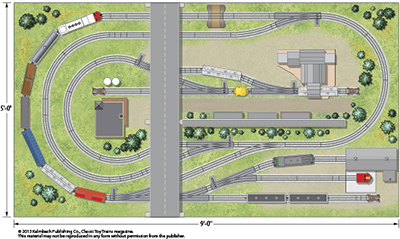
Layout designer: Kent Johnson Scale: O Layout size: 5 x 9 feet Track type: Lionel FasTrack Minimum curve: O-31 Originally appeared in the October 2013 issue of Classic Toy Trains. A FasTrack 5 x 9 made to handle the curves A FasTrack 5 x 9 made to handle the curves schematic A FasTrack 5 x […]
Read More…
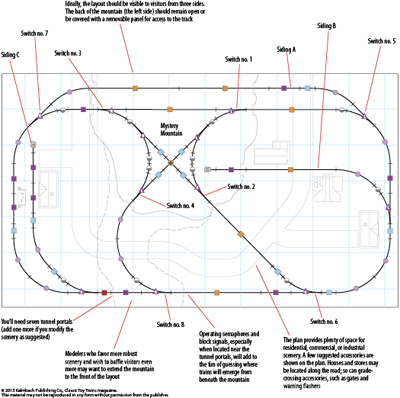
Layout designer: Peter Riddle Scale: O Layout size: 6 1/2 x 11 feet Track type: Lionel FasTrack Minimum curve: O-36 Originally appeared in the September 2013 issue of Classic Toy Trains. A FasTrack scheme with a surprising secret A FasTrack scheme with a surprising secret schematic A FasTrack scheme with a surprising secret components […]
Read More…
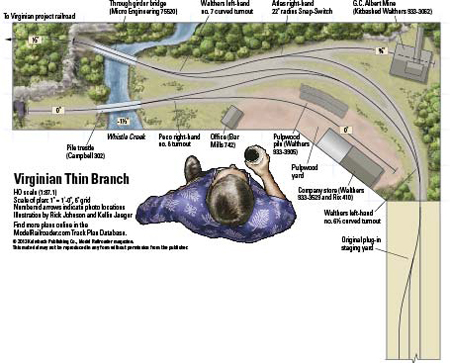
Name: The Thin Branch Layout designer: David Popp Scale: HO (1:87.1) Size: 30″ x 72″ Prototype: Virginian Ry. Locale: West Virginia Era: spring 1955 Style: portable Mainline run: 7 feet Minimum radius: 18″ Minimum turnout: Atlas 22″ radius Snap-Switch Maximum grade: 3 percent (switchback) Originally appeared in the August 2013 Model Railroader. Click on the […]
Read More…
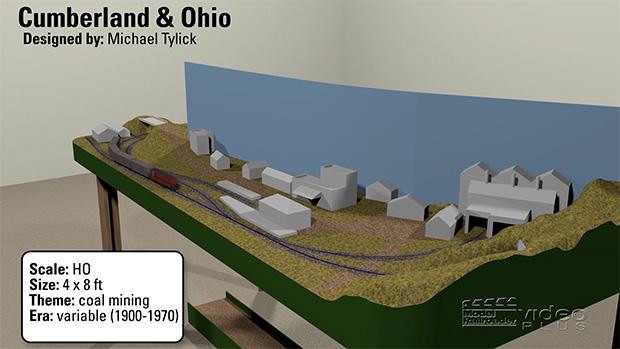
Having trouble viewing this video? Please visit our Video FAQ page Looking for a small layout with an expansive Appalachian feel? The 4 x 8 foot HO scale Cumberland & Ohio plan provides just that! This layout includes two towns, a mine, and a lot of operation in a compact space. […]
Read More…
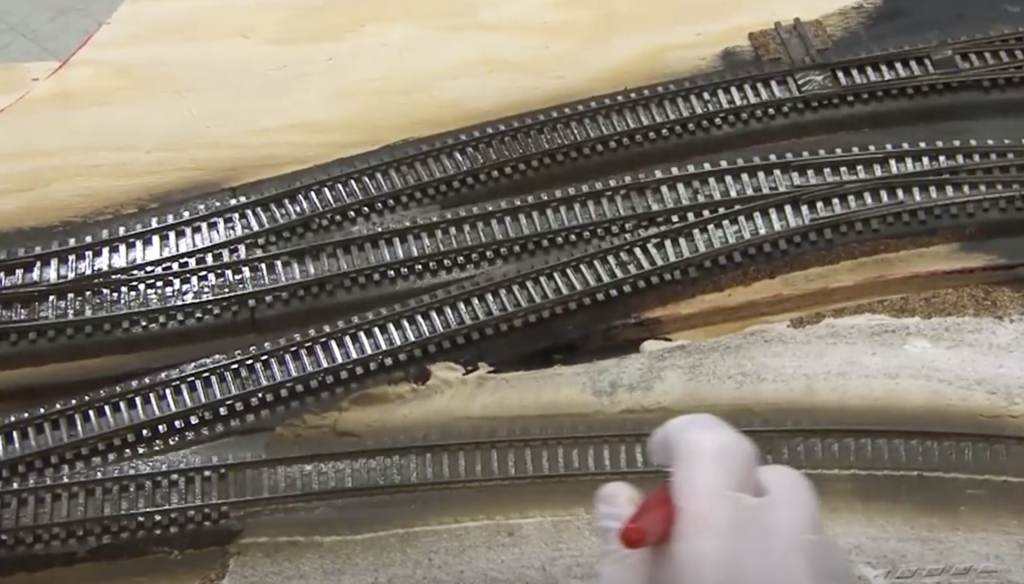
To make your track look realistic, you need to paint it. Cody Grivno shows you how he painted the track for our Thin Branch project railroad using an airbrush and acrylic paints. […]
Read More…
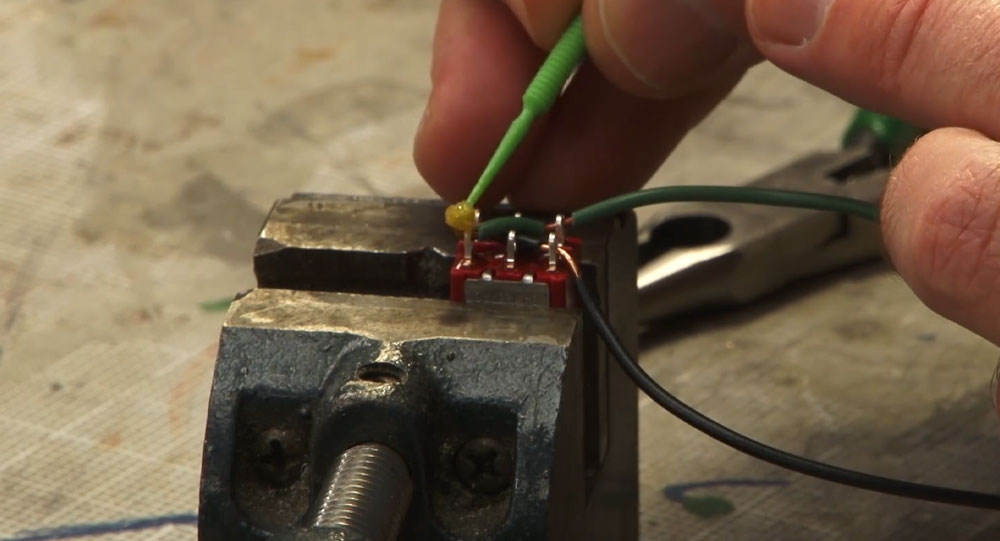
Power-reversing switches are commonly used when wiring switch motors or creating reverse loops on DC-powered layouts. Learn how to make your own reversing switches using a common double-pole double throw toggle switch. […]
Read More…












